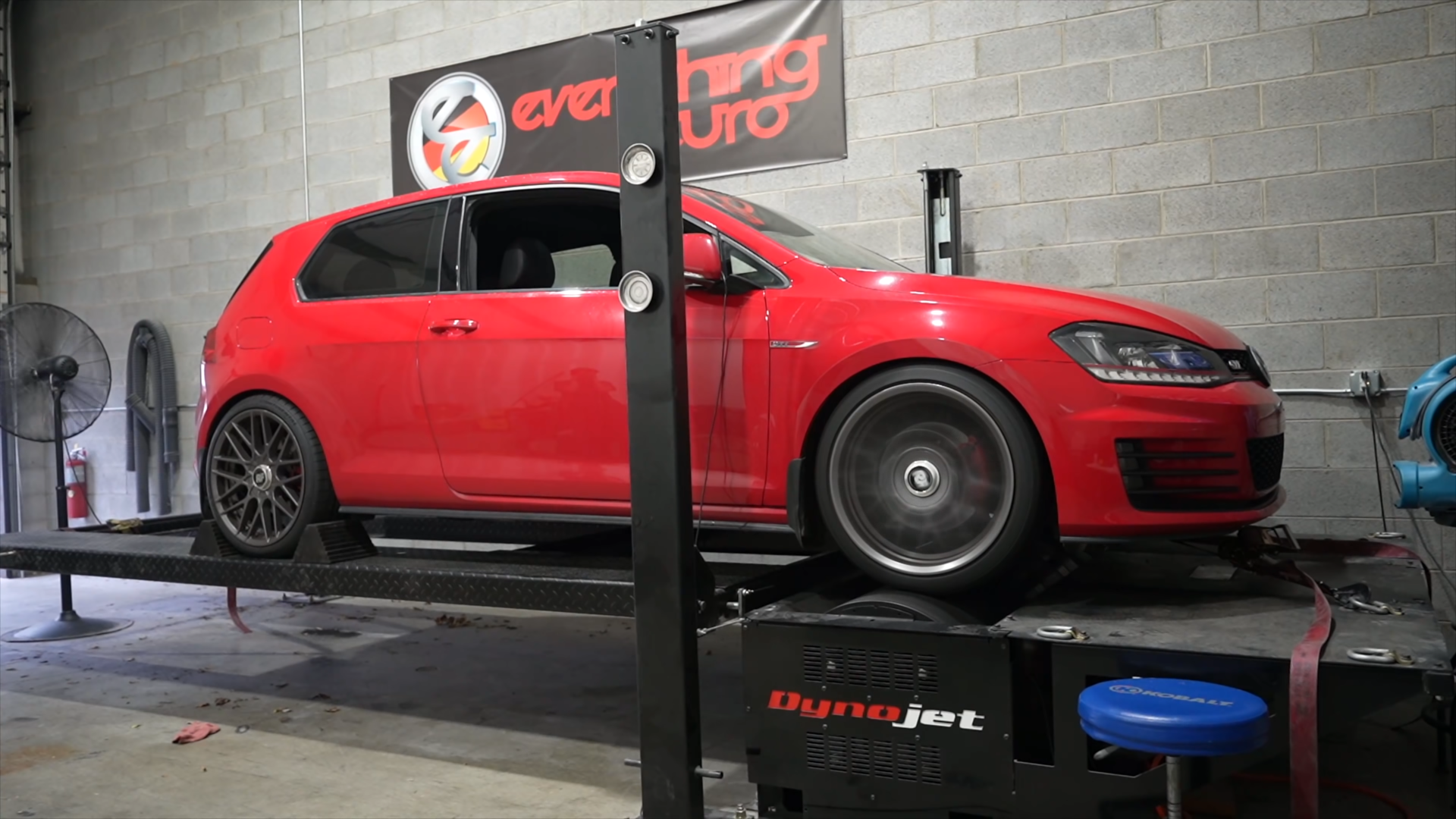

If you’ve been hanging around the car scene in the last couple decades, you’d have heard about E85. Some deride it as mere “corn juice,” while others tout it as a magical performance elixir. The Deutsche Auto Parts crew decided to put together a primer video that educates us all on just what E85 is, and how it can deliver more power for your car.
The video is primarily centered around modern European vehicles like the 2015 Volkswagen Golf GTI used in the testing. However, much of the basic information is applicable to any fuel-injected car from the last 20 years.

E85 is, nominally speaking, a blend of 85 percent ethanol with 15 percent gasoline. Fundamentally, the real benefits of the fuel come from the high level of knock resistance it confers, allowing boost and timing to be wound up to make more power. E85 fuel can have an octane rating in the vicinity of 105 based on the US rating system, versus 91 or 93 octane for regular premium gas.
In a modern Euro car, switching to E85 can be quite easy. While the Deutsche Auto Parts team shows that you can simply put E85 straight in the tank of a stock car and net a small performance benefit, it’s not really the right way to go about it. Ideally, the proper method is to install a flex-fuel sensor that accounts for varying levels of ethanol content in the fuel and a suitable ethanol-ready tune. This is key to practicality, as it lets one fill up a car with E85 fuel without having to drain the tank entirely to ensure the octane rating of the fuel matches what the tune expects.
In dyno testing, the 2015 GTI produced 235 horsepower and 297 pound-feet of torque running on 93 octane gas. Running E85 fuel on the stock tune bumped that up to 244 hp and 308 pound-feet of torque.
However, real gains often require fuel system upgrades. The reason is that ethanol has around 30 percent less energy content than gas. Thus, you need to inject more E85 to make the same power as a given amount of gasoline. When running at the higher boost and advanced timing levels enabled by E85, you need to inject even more again. Depending on the car, this may necessitate fuel pump or injector upgrades to flow the additional fuel.
In the case of the 2015 GTI, once fitted with an upgraded high-pressure fuel pump and a flex-fuel sensor, a higher-powered ethanol-ready performance tune could be flashed into the car’s ECU. Once appropriately equipped, the car made 302 horsepower and 403 pound-feet of torque on 93 octane. Despite having race-grade E85 on hand, the team was unable to fully drain the tank of 93 octane gas. Thus, when topped off, the GTI’s tank had an ethanol content of 57 percent. Even at this level, though, figures bumped up to 335 horsepower and 434 pound-feet of torque respectively.

The video goes into detail about how keeping track of ethanol content is important. E85 as delivered at the pump typically varies from 51 percent to 83 percent depending on location and weather. Lower ethanol levels are sold in the winter in order to avoid cold-start issues that can be common with the fuel.
The Deutsche Auto Parts team in North Carolina noted they’ve seen ethanol content varying from the low 70s to low 80 percentage levels from the local Sheetz gas stations. Putting in half a tank of that fuel on top of several gallons of regular gas would only drop the ethanol level lower. Having a flex-fuel sensor in the car to monitor the ethanol content and automatically adjust the tune appropriately is key to safely running this fuel.
For all the good, though, there are also a few drawbacks. Ethanol is hygroscopic, meaning it absorbs water from the air. This can lead to variability in performance, as well as degrade the fuel over time. There are also concerns in the long term over corrosion, but if you’re regularly driving the car, it shouldn’t be a problem. Fuel economy is also worse, due to the lower energy content of ethanol. This can be negligible or on the order of 10-30 percent, depending on one’s driving style and the given tune used.
The video also touches on the typically cited horror of ethanol eating fuel system components. However, this is only really an issue for older vehicles using rubber fuel system hoses and seals. The vast majority of cars built from the late ’90s onwards do not suffer this problem.
Overall, the video serves as a useful guide to getting familiar with E85 fuel. If you’re running a car with an ECU that can be easily modded and flash tuned, getting more power from ethanol can be remarkably easy. It’s a much harder job on older cars, of course, which would require upgrades to engine management, but the video is aimed at an audience familiar with modern Volkswagen products where this isn’t an issue. Feel free to sound off below with your take—do you rate the corn sauce, or prefer to rip burnouts on dinosaur blood alone?
Got a tip? Let the author know: lewin@thedrive.com